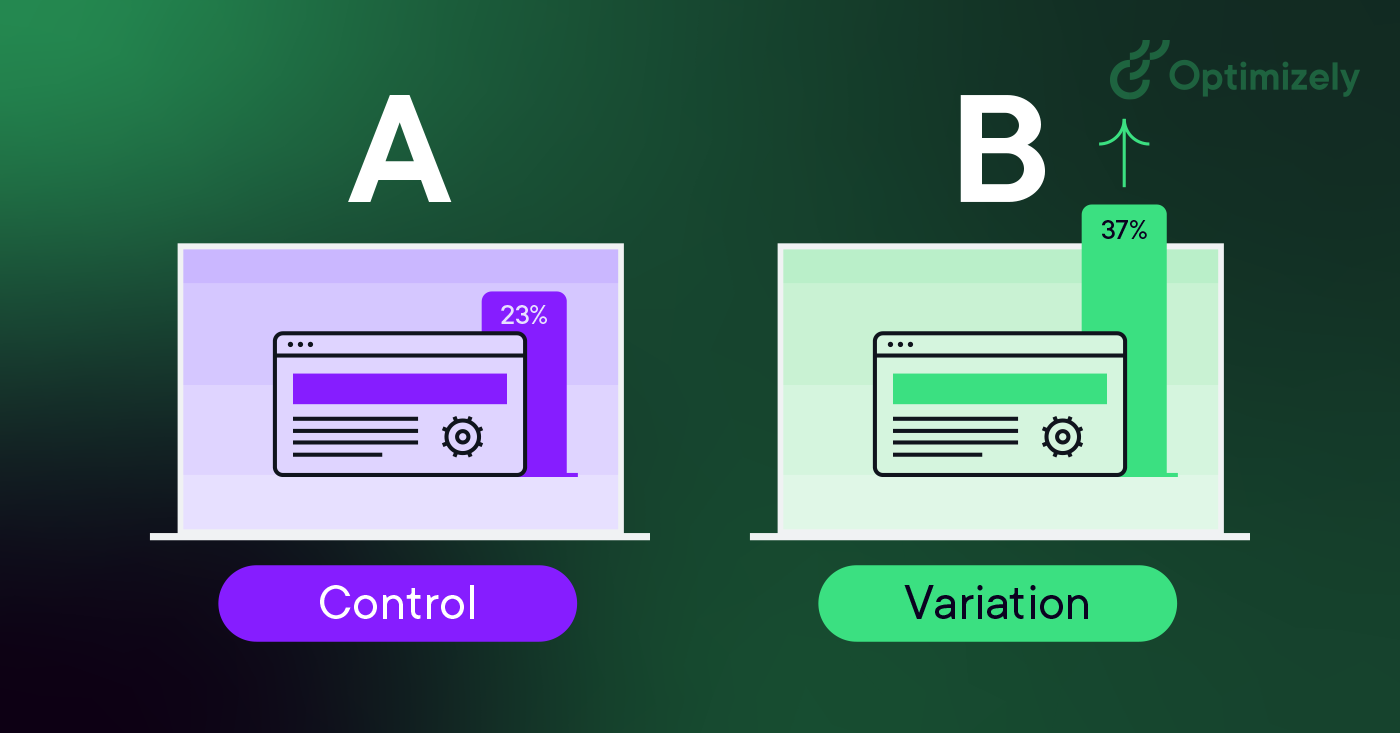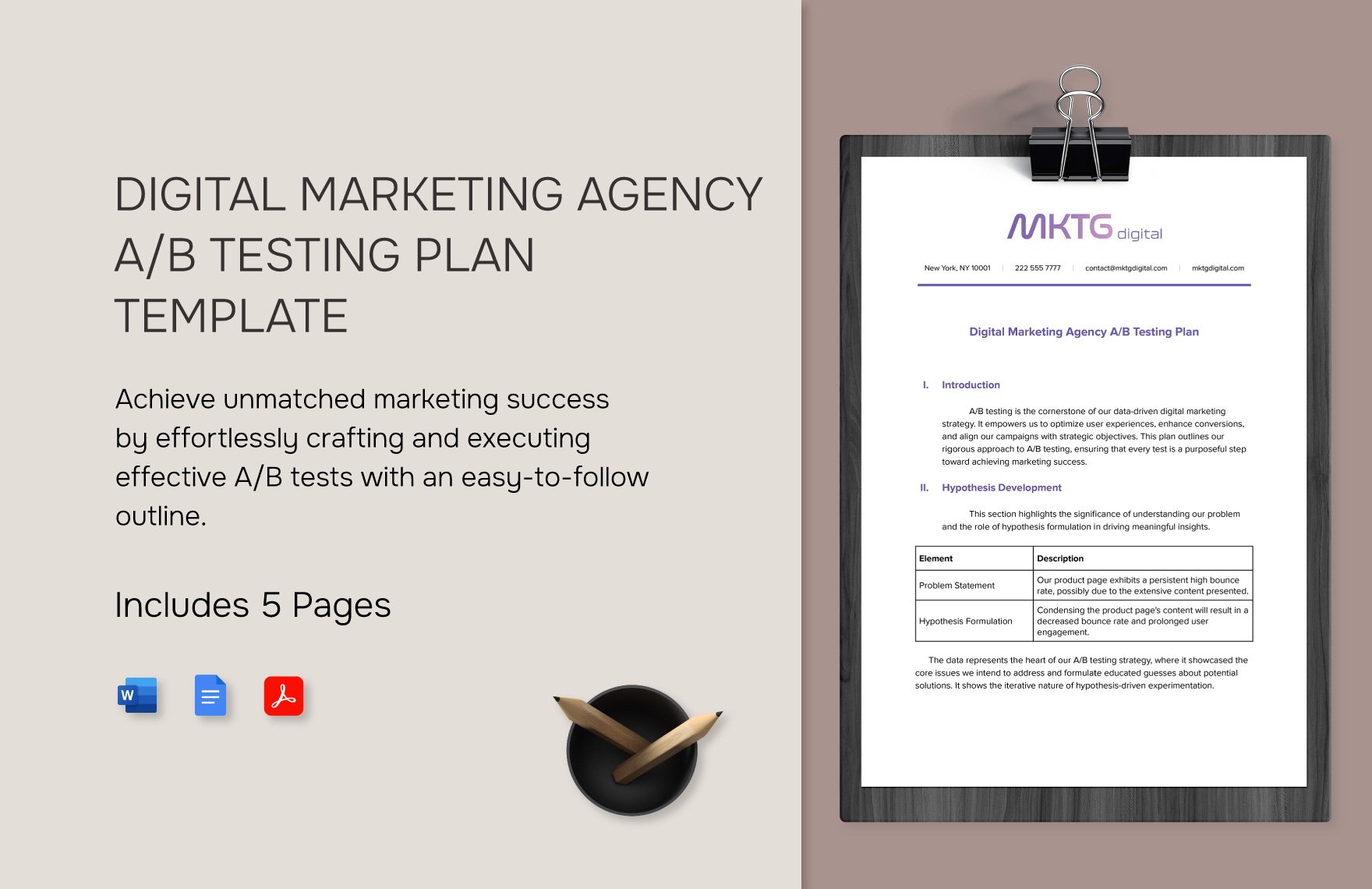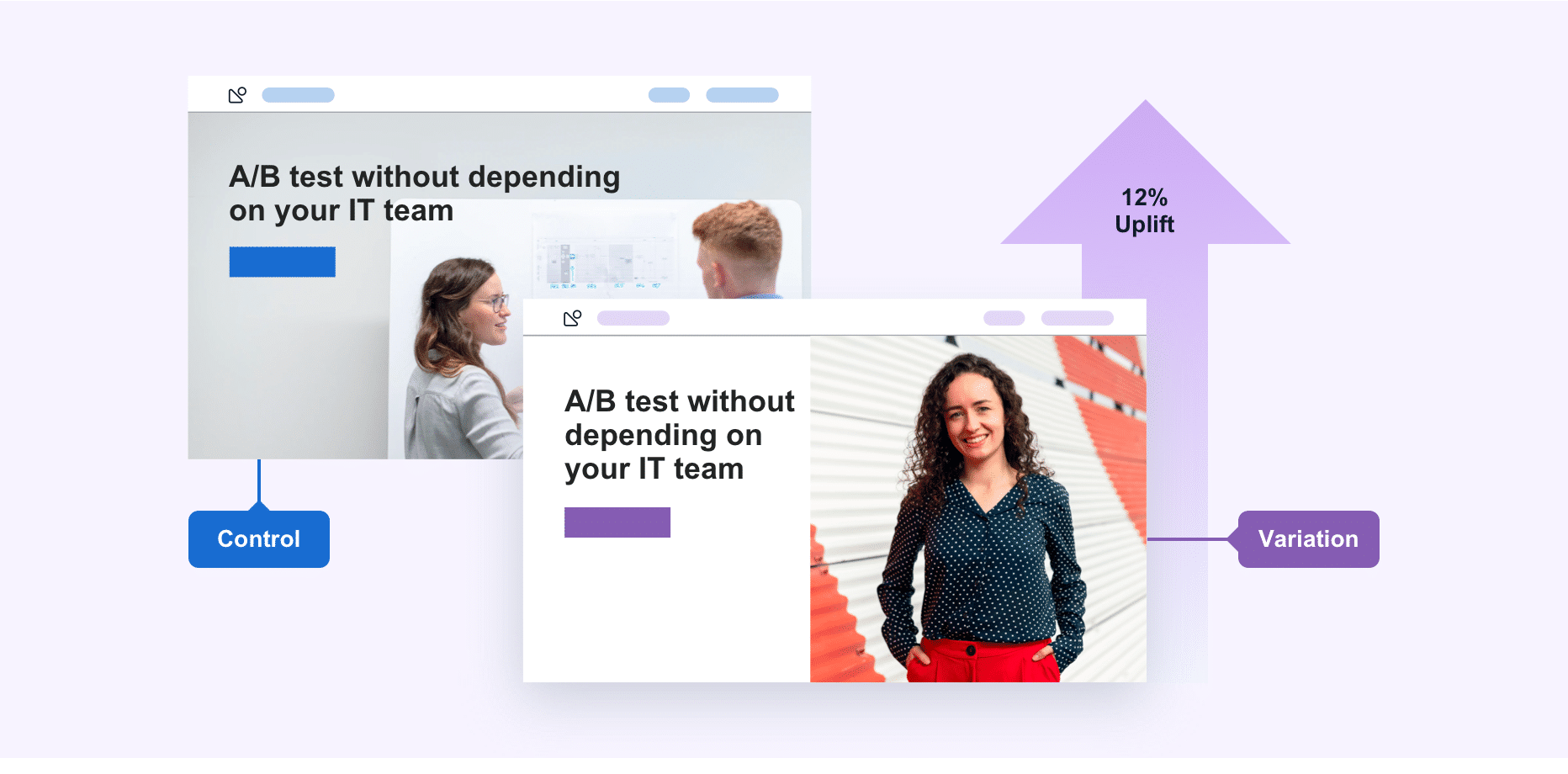A/B testing is a highly effective method in digital advertising to compare two versions and determine the most successful one. In today’s digital landscape, where competition is fierce and advertising budgets are limited, it is crucial to ensure that every marketing dollar is spent wisely.
This is where A/B testing comes into play. A/B testing, also known as split testing, is a method used by advertisers to compare two versions of a webpage, ad, or email to determine which one performs better in terms of conversions, click-through rates, and overall engagement.
By systematically testing various elements such as headlines, images, call-to-action buttons, or even different layouts, marketers can gather valuable data and insights to optimize their campaigns for maximum effectiveness. We will explore the importance of A/B testing in digital advertising and how to conduct successful experiments that yield actionable results.

Credit: www.optimizely.com
The Basics Of A/b Testing
A/B testing is a method used to compare two versions of a webpage or app to determine which one performs better. It helps marketers make data-driven decisions and optimize their digital advertising strategies. By testing different elements like headlines, images, or calls-to-action, marketers can understand what resonates with their audience and improve conversion rates.
What Is A/b Testing?
A/B testing, also known as split testing, involves presenting two versions of a digital asset to similar audiences to see which one yields better results. It allows marketers to assess the effectiveness of changes and implement those that drive the desired outcomes. Through statistical analysis, A/B testing helps in identifying the most effective variations to improve the performance of digital advertising campaigns.
Why Is A/b Testing Important?
A/B testing is crucial because it provides concrete evidence of what works and what doesn’t. It empowers marketers to make informed decisions based on real user data rather than assumptions, leading to more effective and targeted advertising. By continuously testing and refining different elements, businesses can stay ahead in the competitive digital landscape and maximize their marketing ROI.
Setting Up A/b Tests
Setting up A/B tests is a crucial step for optimizing your digital advertising campaigns. By conducting these tests, you can gain valuable insights into what elements of your ads are most effective in driving the desired actions from your target audience. In this section, we will explore the key steps involved in setting up A/B tests for your digital advertising efforts.
Defining Clear Objectives
Before you start performing A/B tests, it’s essential to define clear objectives that align with your overall marketing goals. Having well-defined objectives allows you to focus your testing efforts on specific aspects of your ads, rather than testing changes aimlessly. Your objectives should be specific, measurable, and tied to your key performance indicators (KPIs).
To define clear objectives, ask yourself:
- What specific action do I want my target audience to take after seeing my ad?
- Which metrics will indicate the success or failure of my ad campaign?
For example, if you’re running a Facebook ad campaign to drive website traffic, your objectives might be to increase the click-through-rate (CTR) and decrease the cost-per-click (CPC). By setting specific objectives, you can effectively measure the impact of your A/B tests on these specific KPIs.
Choosing Test Variables
Once you have defined your objectives, it’s time to choose the test variables that you will be experimenting with. Test variables are the elements of your ads that you will be altering in each A/B test. These variables can include the headline, ad copy, images, call-to-action, colors, and placement on the web page.
When choosing your test variables, consider:
- The potential impact of each variable on your objectives
- The relevance of each variable to your target audience
- The ease of changing and measuring each variable
It’s important to only test one variable at a time to accurately determine its impact. Testing multiple variables simultaneously can make it difficult to attribute changes in performance to a specific variable.
For example, if your objective is to improve click-through-rates, you might choose to test two different headlines in your ads. By keeping all other variables constant and measuring the CTR for each headline, you can identify which headline is more effective in capturing your audience’s attention.
Remember, setting up A/B tests requires careful planning and execution. By defining clear objectives and choosing test variables wisely, you can conduct effective A/B tests that provide valuable insights for optimizing your digital advertising campaigns.
Implementing A/b Tests
Discover how to optimize your digital advertising campaigns through effective A/B testing methods. By implementing these tests, you can analyze user behavior and make data-driven decisions to enhance your online advertising strategies.
Implementing A/B Tests Creating Test Variations To effectively conduct A/B tests in digital advertising, it is crucial to create test variations that accurately reflect the elements you want to test. This involves making specific changes to your ads or landing page and tracking the performance of each variation. Here are some key points to keep in mind when creating test variations: 1. Keep it simple: It’s important to change only one element at a time in each variation. This allows you to pinpoint the impact of that specific change on your ad’s performance. For example, if you want to test the effectiveness of different headlines, create variations where only the headlines are different, while keeping other elements unchanged. 2. Focus on meaningful changes: When creating test variations, ensure that the changes you make are significant enough to potentially influence user behavior. This could include altering the visuals, changing the call-to-action button, or modifying the ad copy. These meaningful changes provide valuable insights into what resonates with your target audience. 3. Test multiple variations: Experiment with different test variations to gain a comprehensive understanding of what works best for your digital advertising campaigns. By testing multiple variations simultaneously, you can compare their performance and identify the most effective elements. Running Simultaneous Tests To make the most out of your A/B testing efforts, it is essential to run simultaneous tests. This allows you to compare the performance of different variations in real-time and make data-driven decisions. Here’s what you need to consider when running simultaneous tests: 1. Splitting traffic: Divert a portion of your total traffic to the different test variations. Splitting traffic evenly ensures that you have a fair comparison between the variations. For instance, if you have two test variations, the traffic should be divided equally between the three versions (original and two variations). 2. Sufficient sample size: To obtain reliable results, it is crucial to have a sufficient sample size for each variation. A small sample size may not provide statistically significant data. Ensure your tests run for a long enough period to gather enough data to make informed decisions. 3. Monitor performance metrics: Keep a close eye on key performance metrics such as click-through rate (CTR), conversion rate, and cost per conversion for each test variation. Analyzing these metrics allows you to identify which variation is performing better and make necessary adjustments. Implementing A/B tests in your digital advertising strategy can significantly enhance your campaign’s effectiveness. By creating test variations that accurately reflect the elements you want to test and running simultaneous tests, you can make data-driven decisions to optimize your advertising efforts.Analyzing A/b Test Results
A/B testing is a crucial component of any digital advertising strategy, providing valuable insights into the effectiveness of different ad variations. Analyzing A/B test results is essential to make informed decisions and optimize campaign performance.
Statistical Significance
Before drawing conclusions from A/B test results, it’s imperative to determine the statistical significance of the data. Statistical significance indicates whether the observed differences between the variations are likely due to genuine effects rather than random chance.
Interpreting Data
Interpreting A/B test data involves examining various metrics such as click-through rates, conversion rates, and engagement metrics. By delving into these data points, marketers can identify which variation resonates best with the target audience and makes informed decisions for future ad campaigns.
Optimizing Based On Test Insights
Enhance digital advertising effectiveness through data-driven A/B testing. Optimize based on test insights to refine ad performance and maximize ROI. Leveraging test results for strategic improvements leads to more impactful digital advertising campaigns.
Making Informed Decisions
In A/B testing, analyzing results helps you make informed decisions for better digital advertising strategies.
- Analyze user behavior.
- Consider feedback from tests.
- Adjust based on statistical significance.
Iterative Testing
Iterative testing involves ongoing experiments to refine advertising approaches based on test outcomes.
- Continuously test variations.
- Refine processes based on data.
- Optimize performance over time.

Credit: www.template.net

Credit: fastercapital.com
Frequently Asked Questions For Effective A/b Testing In Digital Advertising
How To Do Ab Testing In Digital Marketing?
To conduct A/B testing in digital marketing, follow these steps: 1. Determine objective and variables to test. 2. Create two versions of the element you want to test. 3. Split your audience into two random groups. 4. Show version A to one group and version B to the other.
5. Measure and compare the performance of each version to identify the better-performing option.
Which Element Is Essential For Effective A B Testing In Digital Marketing?
Data analysis is essential for effective A/B testing in digital marketing. Accuracy in testing, measuring and interpreting data is crucial to make informed decisions.
How Do You Do An Effective Ab Test?
To do an effective A/B test, create clear objectives, form distinct test variations, ensure a large enough sample size, analyze results accurately, and implement successful changes based on findings. Regularly monitor performance for continuous improvement.
Why Is B Testing Important In Digital Marketing?
A/B testing is crucial in digital marketing as it helps optimize campaigns by comparing different versions for better performance.
Conclusion
A/B testing is a crucial tool for optimizing digital advertising campaigns. By analyzing variations, you can discover valuable insights to enhance your marketing efforts. Continuous testing, data-driven decisions, and a focus on user experience are key to success in a rapidly evolving digital landscape.
Embrace A/B testing to drive better results for your digital advertising strategies.
